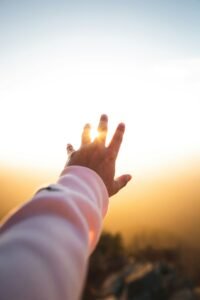Larks and Owls: The Two Rhythms of Energy that Exist in People
For centuries, it has been observed that not all people start and end their day in the same way. While some wake up with great vitality and take advantage of the early hours to perform at their best, others need more time to become active, reaching their peak of energy in the late afternoon or even at night. This difference, far from being a simple matter of taste, is related to our chronotype, and is usually divided into two main categories: larks and owls.
Las Alondras: Energy from Sunrise
Lark people tend to wake up early naturally, without the need for alarms. Their physical and mental energy is more available in the morning, which makes them excellent candidates for jobs or activities that start early in the morning. Their productivity peaks between 7:00 and 11:00 am. However, as the day progresses, they notice a progressive decrease in energy, so they tend to prefer to go to bed early and avoid evening commitments.
Being a lark can have certain advantages in a world that is generally designed for early risers. Schools, offices, public institutions and many routines are structured to start early. This can facilitate better social and professional adjustment, although it can also put additional pressure on those who don’t adjust to that pace.
The Owls: Energy that Blossoms with Time
Owls, on the other hand, have a completely different rhythm. They find it difficult to start the day, they tend to feel drowsy during the first hours, but they wake up progressively. Their level of energy and creativity tends to rise from mid-afternoon onwards, reaching its peak in the evening. Many artists, writers, programmers and digital creators identify with this pattern, as they find inspiration and focus when most people are already tuning out.
However, owls often face difficulties when they must adapt to early routines imposed by the environment, which can lead to problems such as social insomnia, accumulated fatigue, or poor morning performance.
Why are we Lark or Owl?
The chronotype is mainly determined by genetic factors. There are specific genes that influence how our body responds to light and how it regulates sleep-wake cycles. In addition, age also plays a role: young children tend to be more larks, while adolescents tend to become owls until adulthood. With age, many people revert to earlier rhythms.
Other influencing factors include hormone levels, lifestyle, stress, diet and especially exposure to natural or artificial light, which regulates the production of melatonin, the hormone that induces sleep.
Impact on Daily Life
Understanding whether one is a lark or an owl not only helps improve productivity, but also overall well-being. For example, a lark working late may feel exhausted and error-prone, while an owl forced to get up early may be at a cognitive disadvantage for several hours of the day.
In the realm of personal relationships, these differences can also create challenges if not mutually understood. A couple where one is a lark and the other an owl could have misaligned schedules that affect everything from communication to intimate life.
Is it possible to change the chronotype?
Although the chronotype has a genetic basis, it is possible to make certain adjustments over time. Through consistent routines, sleep hygiene, exposure to light at key hours, and healthy habits, some people are able to partially adapt their natural rhythm. However, it is important to respect one’s body and not to overtax it, as this can lead to sleep disorders or chronic fatigue.
Conclusion
Identifying whether you are a lark or an owl is the first step to organizing your life in a more effective and healthy way. Neither type is better than the other: each has its strengths and peak performance moments. The important thing is to understand your own rhythms, accept them and, when possible, adapt your activities to them.
Whether you’re a person who wakes up before dawn with clear ideas or someone who finds their creative spark in the moonlight, remember that both paths are equally valid. The key is to listen to yourself and find your own balance.


